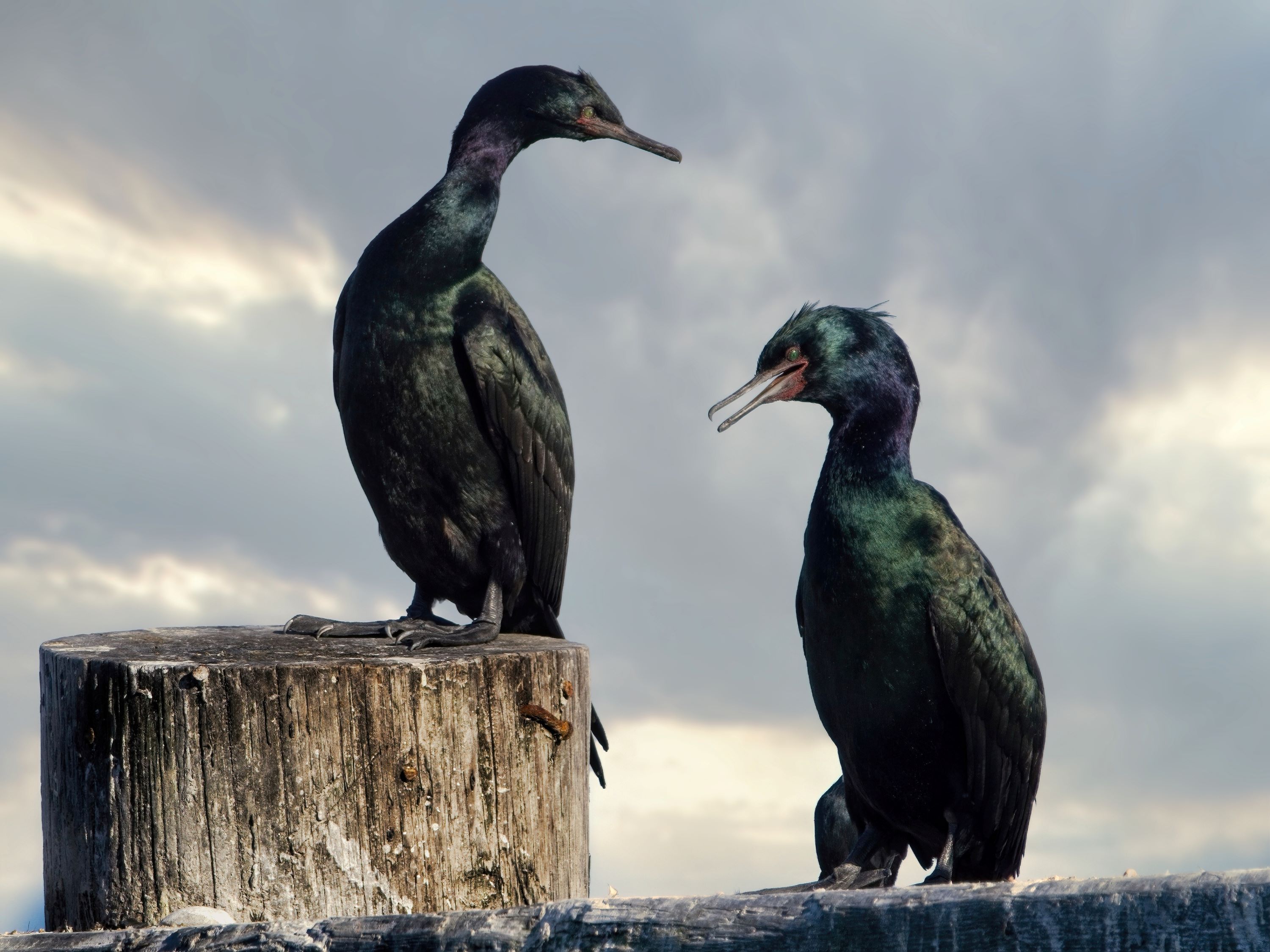
Pelagic Cormorant: The Ocean's Elegant Diver
Introduction to the Pelagic Cormorant
The Pelagic Cormorant, known scientifically as Urile pelagicus, is a distinct species within the cormorant family. This slender, medium-sized bird is renowned for its graceful diving abilities and its preference for the colder coastal waters of the North Pacific Ocean, distinguishing itself from its more widespread relatives.
Physical Description
The Pelagic Cormorant is relatively smaller compared to other cormorant species, typically measuring about 70 cm in length with a wingspan of around 100 cm. Its plumage is predominantly glossy black with a green or purplish sheen. During the breeding season, adults develop striking white patches on their flanks and distinctive crests on their heads, adding a touch of elegance to their appearance.
Habitat and Distribution
This species is aptly named for its pelagic lifestyle, preferring to inhabit open ocean environments rather than inland waters. The Pelagic Cormorant is primarily found along the rocky coasts and islands of the North Pacific, ranging from Alaska down through California, and across to the eastern coasts of Russia and Japan.
Breeding and Nesting Habits
The Pelagic Cormorant is known for its cliff-nesting habits. They typically build their nests on steep, inaccessible rocky outcrops close to the ocean, using materials like seaweed, grass, and feathers. These nesting sites provide protection from predators and easy access to their feeding grounds.
Egg Laying and Incubation
The female usually lays 3 to 5 eggs per breeding season. Both parents share in the incubation duties, which last for about a month. The nests, often precariously perched on cliff faces, are a testament to the bird's adaptability and resilience in harsh coastal environments.
Chick Rearing and Parental Care
Chicks are born altricial and require extensive parental care. They are fed a diet of regurgitated fish by both parents, allowing them to grow and develop the necessary skills for survival in the marine environment.
Diet and Feeding Behavior
The Pelagic Cormorant primarily feeds on small fish, supplemented by crustaceans and cephalopods. They are skilled divers and use their webbed feet to propel themselves underwater in pursuit of prey. This species is particularly adept at foraging in deeper waters and along rocky underwater landscapes.
Adaptations for Aquatic Life
The Pelagic Cormorant has several adaptations for its aquatic lifestyle. Its plumage, less waterproof than that of many water birds, allows it to dive more efficiently. After diving, they are often seen perched with their wings outstretched to dry, a characteristic pose for many cormorants.
Conservation Status
Currently, the Pelagic Cormorant is not listed as endangered. However, like many seabirds, it faces threats from environmental changes, pollution, and human disturbance. Efforts to monitor and protect their breeding sites and food sources are crucial for their continued survival.
Conclusion: A Coastal Gem
In conclusion, the Pelagic Cormorant, Urile pelagicus, is a remarkable bird, showcasing the beauty and adaptability of marine avian species. Their specialized diving skills, unique breeding habits, and role in the coastal ecosystem make them an intriguing subject for study and conservation. While they are not found in Utah, their presence along the North Pacific coastlines adds to the richness of the region's biodiversity, highlighting the importance of protecting these specialized seabirds and their habitats.